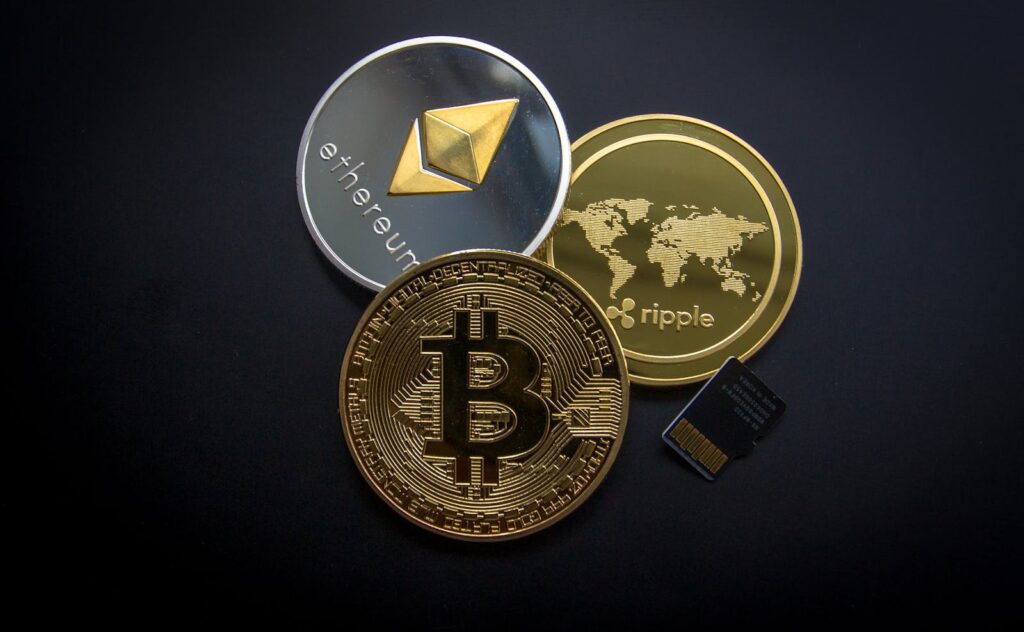In today’s digital landscape, the surge of cryptocurrencies has made it essential for users to understand how to transfer crypto securely. With the potential for both immense profit and significant loss, ensuring that your cryptocurrency transactions are safe is paramount. In this guide, we will delve deep into the nuances of secure crypto transfers, examining risks, best practices, and methods that can safeguard your assets.
Understanding the Risks of Cryptocurrency Transfers

Before diving into the mechanics of transferring cryptocurrency, it’s crucial to grasp the inherent risks associated with these transactions. The decentralized nature of cryptocurrencies provides anonymity and freedom, but it also opens doors to various vulnerabilities.
The Anonymity Factor
One of the most appealing aspects of cryptocurrencies is their capacity for anonymous transactions. While this can protect users’ identities, it also creates a breeding ground for fraudulent activities.
Many scammers exploit the anonymity that cryptocurrencies provide. They may create fake investment schemes, pockets of illicit activity, or phishing sites aimed at stealing personal information. Understanding how anonymity plays into these risks can help you remain vigilant and safer when engaging in transactions.
Transaction Irreversibility
Cryptocurrency transactions are fundamentally irreversible. This characteristic can be both a blessing and a curse. Once you send crypto, there’s no way to retrieve it unless the recipient willingly returns the funds.
This irreversibility heightens the stakes involved in crypto transactions. If you fall victim to a scam, accidentally send funds to the wrong address, or realize you’ve sent the incorrect amount, there’s little recourse. Therefore, developing a keen awareness of transaction details and the recipient’s credibility becomes vital.
Market Volatility
Cryptocurrencies are notorious for their price fluctuations. A sudden drop in market value could turn a profitable transaction into a significant loss in minutes.
Understanding market trends and being aware of the timing of your transactions can mitigate some risks. Additionally, considering stablecoins or other less volatile options might provide a safety net during uncertain times.
Cybersecurity Threats
The rise of cryptocurrencies has been accompanied by an increase in cyber threats. Hackers target wallets, exchanges, and even individual users through various means, from phishing scams to malware attacks.
Investing in robust cybersecurity measures is essential for protecting your assets. Ensuring that you’re well-informed about the latest security protocols can help thwart potential threats before they materialize.
Securing Your Crypto Wallets Before Transferring

Your cryptocurrency wallet is the primary instrument for receiving, storing, and sending crypto assets. Thus, securing your wallet is fundamental to safely transferring cryptocurrency.
Types of Wallets
There are several types of wallets available, each with its own level of security and convenience. Understanding the differences can help you choose the right one for your needs.
Hardware wallets are physical devices that store your cryptocurrencies offline. They offer robust security against online hacking attempts but can be more challenging to access for frequent transactions.
Software wallets, which can come as desktop or mobile applications, provide greater ease of use. However, they are more susceptible to malware and online threats. Choosing between these options depends on whether you prioritize security or accessibility.
Setting Strong Passwords
A strong password is the first line of defense for any cryptocurrency wallet. Always opt for complex passwords that include a mix of uppercase and lowercase letters, symbols, and numbers.
Utilizing a password manager can further enhance this process, enabling you to create unique passwords without the need to memorize them all. Regularly updating your passwords and avoiding reusing them across platforms is also advisable.
Private Keys Management
Private keys are crucial for accessing your cryptocurrency holdings. Treat them with utmost care; if someone gains access to your private key, they gain complete control over your assets.
To enhance security, consider using a hardware wallet, which often allows you to generate and store private keys offline. Furthermore, never share your private keys, and be cautious of sharing wallet addresses, especially on unsecured platforms.
Backing Up Your Wallet
Backing up your wallet ensures that you can recover your assets if your device is lost or damaged. Regularly creating backups of your wallet data can mitigate the risk of losing access to your cryptocurrencies.
Ensure that your backup is stored in a secure location, preferably offline. Utilize encrypted drives or paper wallets for added protection.
Choosing the Right Transfer Method: Exchanges, Wallets, and More

Selecting the appropriate method for transferring cryptocurrency can significantly impact security and efficiency. Various options exist, each catering to different needs and risk levels.
Centralized Exchanges
Centralized exchanges (CEX) are popular platforms for buying, selling, and transferring cryptocurrencies. These exchanges operate as intermediaries, holding users’ funds and executing trades on their behalf.
While CEXs provide convenience and liquidity, they come with risks. Users must trust the exchange with their funds, and past incidents of hacks and insolvencies have demonstrated the importance of choosing reputable exchanges. Always do thorough research to ensure the exchange has adequate security measures in place.
Decentralized Exchanges
Decentralized exchanges (DEX) allow users to trade cryptocurrencies directly with each other, eliminating the need for an intermediary.
Although DEXs enhance privacy and control over funds, they can pose increased risks due to the lack of regulatory oversight. Additionally, users must navigate potentially complicated interfaces and smart contracts, making it essential to have a solid understanding of how DEXs function before using them.
Peer-to-Peer Transfers
Peer-to-peer (P2P) platforms facilitate direct transactions between individuals without a third party. These platforms can offer lower fees and faster transactions. However, they require a higher level of trust between parties.
Utilizing P2P networks necessitates caution. Engage only with verified users and consider using escrow services provided by the platform to safeguard your funds during the transaction.
Blockchain-Based Solutions
Blockchain technology allows for innovative transfer solutions that enhance security and transparency. Utilizing blockchain-specific apps can reduce risk by providing immutable transaction records that users can verify.
Choosing a transfer method based on your priorities—whether security, speed, or cost—is crucial for optimizing your crypto experience. Evaluate each option thoroughly to find the fit that aligns with your needs.
Implementing Multi-Factor Authentication for Enhanced Security
Multi-factor authentication (MFA) acts as an additional layer of security beyond traditional passwords. By requiring two or more separate forms of verification to access accounts, MFA significantly enhances protection against unauthorized access.
What is Multi-Factor Authentication?
MFA requires users to provide multiple pieces of evidence to confirm their identity. This typically includes something they know (like a password), something they have (like a smartphone), or something they are (biometric data such as fingerprints).
Implementing MFA reduces the risk of unauthorized access, even if someone manages to obtain your password. As crypto transactions can lead to substantial monetary loss, utilizing multi-factor authentication should be a non-negotiable practice.
Types of MFA Methods
Several methods of MFA exist, each varying in effectiveness and user experience. Common options include:
- SMS Verification: Users receive a text message with a code to enter after inputting their password. However, this method has vulnerabilities, as SMS messages can be intercepted.
- Authenticator Apps: Applications like Google Authenticator or Authy generate time-sensitive codes that users input alongside their passwords. This method provides a higher level of security than SMS verification.
- Hardware Tokens: Physical devices, such as YubiKey, generate unique codes for authentication. They are considered one of the most secure methods for preventing unauthorized access.
Activating MFA Across All Platforms
Activating MFA should not be limited to your cryptocurrency wallets; it should extend to every account that handles sensitive information. Social media, email, and exchanges should all utilize MFA to bolster your overall security posture.
Regularly reviewing your MFA settings is also essential as new features and methods emerge. Staying informed about the latest security protocols can ensure that you maintain the highest levels of security for your transactions.
Overcoming MFA Challenges
While MFA greatly enhances security, it’s important to acknowledge some challenges associated with its implementation. Users may encounter issues with connectivity, particularly with SMS-based verification, and may struggle with usability regarding hardware tokens.
Diversifying your MFA methods can help mitigate these challenges, providing flexibility while maintaining security. Always keep your recovery codes and backup methods securely documented, ensuring that you have access to your accounts even in emergencies.
Best Practices for Safe Cryptocurrency Transfer Execution
Executing a cryptocurrency transfer involves several steps where caution and attention to detail are necessary. Adopting best practices can prevent common pitfalls and enhance your overall security during transactions.
Verifying Recipient Details
Before initiating a transfer, double-check the recipient’s wallet address. Cryptocurrencies are case-sensitive, so even a single character error can result in the permanent loss of funds.
Consider copying and pasting wallet addresses rather than typing them manually, which decreases the likelihood of mistakes. Some wallets also allow you to save frequently used addresses, streamlining future transactions while ensuring integrity.
Using Test Transactions
When transferring a large amount of cryptocurrency, consider conducting a smaller test transaction first. This method verifies that the address is correct and that the recipient is ready to receive funds without risking significant amounts.
Test transactions can serve as a safety net, allowing you to confirm all systems are functioning correctly before committing larger sums. This approach is particularly prudent when dealing with new wallets or exchanges.
Keeping Track of Transaction Status
After executing a transaction, monitor its status on the blockchain explorer pertinent to the cryptocurrency in question. Blockchain explorers provide real-time insights into transaction confirmations and block confirmations.
Tracking your transaction can alert you to potential issues, such as delays or problems with confirmations, allowing you to take action promptly.
Educating Yourself Continually
The world of cryptocurrency is rapidly evolving, introducing new technologies, regulations, and best practices regularly. Staying informed about trends, emerging threats, and security innovations can significantly benefit your transaction security.
Subscribe to industry news outlets, join forums, and participate in community discussions to remain knowledgeable. Engaging with others who share the same interests can also provide valuable insights and practical tips for enhancing your transaction security.
Protecting Yourself Against Common Crypto Transfer Scams
Scammers continually devise new tactics to exploit unsuspecting users and compromise their assets. Awareness of common scams and preventative measures can protect you during transactions.
Phishing Attacks
Phishing remains one of the most prevalent forms of attack in the crypto space. Users may receive emails or messages that appear legitimate, prompting them to click on malicious links or provide sensitive information.
Always scrutinize emails, messages, and websites carefully. Ensure URLs are accurate and free from unusual characters, and never disclose personal information, including passwords or private keys.
Fake Investment Schemes
Scammers often lure individuals with promises of unrealistic returns on investment. These schemes may appear on social media, forums, or dedicated websites, enticing users to invest substantial amounts in non-existent opportunities.
Always conduct thorough research before investing in any cryptocurrency project. Verify claims, investigate team members, and consult reviews from credible sources. If something seems too good to be true, it likely is.
Ponzi Schemes
Ponzi schemes promise high returns to early investors, paying off with the funds of newer participants. These schemes eventually collapse, leaving later investors with losses.
Recognizing the telltale signs of Ponzi schemes—such as pressure to recruit new members or guaranteed returns—is crucial for self-protection. Rely on solid fundamentals and sustainable growth when evaluating potential investments.
Reporting Suspicious Activity
If you encounter suspicious activity or believe you’ve fallen victim to a scam, report it to the relevant authorities immediately. Many countries have regulatory bodies that handle financial fraud. Reporting helps raise awareness and can protect other users from similar experiences.
By remaining vigilant and adopting preventive measures, you can protect yourself against common scams and navigate the crypto landscape with confidence.
Conclusion
Understanding how to transfer crypto securely is not only about knowing the theoretical aspects but also about implementing practical measures that protect your assets. From comprehending the risks associated with different transfer methods to employing advanced security measures such as multi-factor authentication, every step taken enhances the safety of your transactions. By maintaining vigilance against scams, securing your wallets, and educating yourself continuously, you can engage in cryptocurrency transfers confidently and securely.


